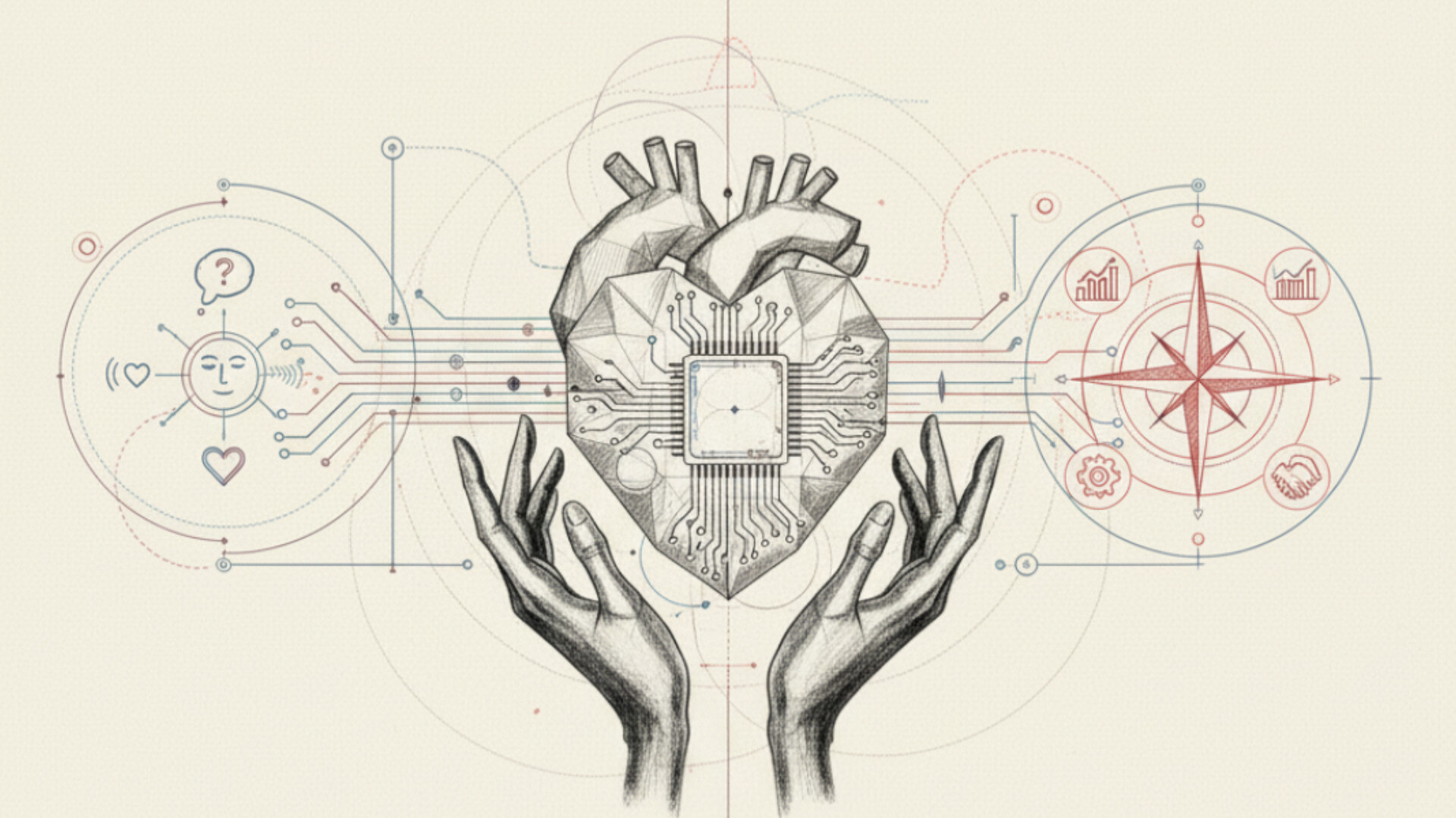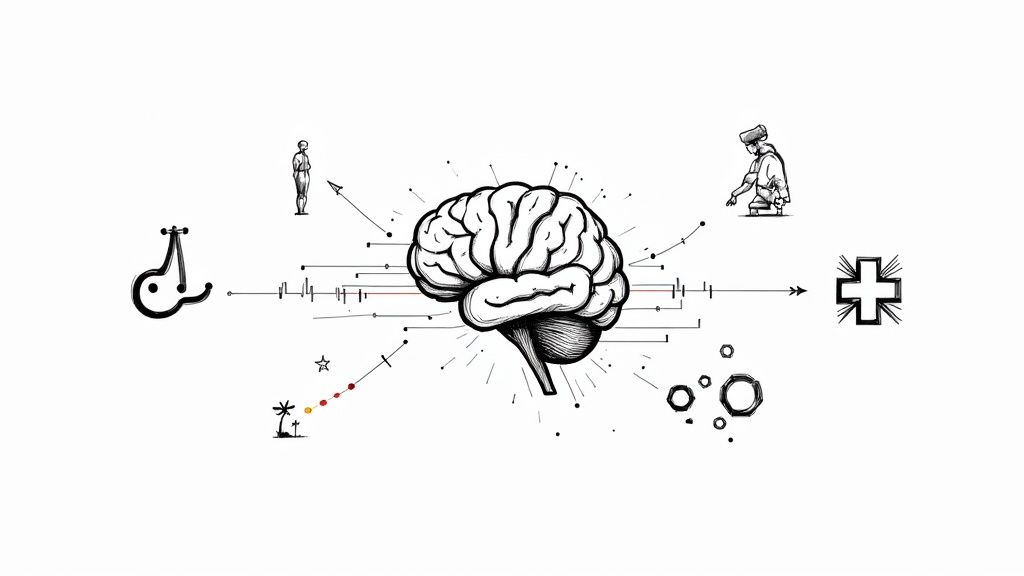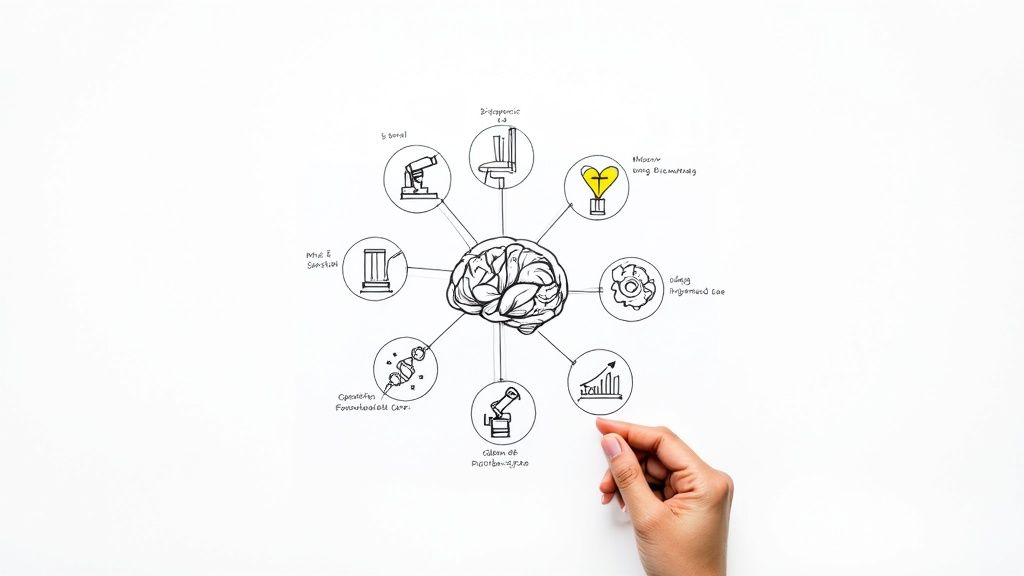Human-Centred AI: What, Why and How
Human-centered AI focuses on designing intelligent systems that empower people. Explore real-world AI strategies, solutions, and use cases driving meaningful innovation.

In today’s fast-evolving digital world, technology complements human capabilities. That is where human-centered AI comes in: AI built around human values, needs, and trust. As companies invest more in AI, they are realizing that human-centered design is not optional but essential for real adoption, satisfaction, and long-term success.
The growth in AI adoption is striking. According to the 2025 AI Index, 78 percent of organizations reported using AI in 2024, up from 55 percent a year earlier. Meanwhile, the human-centered AI market itself is projected to expand from about USD 11.27 billion in 2024 to USD 73.52 billion by 2034, a compound annual growth rate (CAGR) of 20.62 percent. Those figures reflect both demand and urgency: companies need AI systems that users can trust, adopt, and lean on.
Yet many AI initiatives stumble. Companies struggle to scale value from AI deployments, and often the failures stem from issues related to people or process, not the algorithms themselves. In that context, centering the human becomes a strategic advantage.
In this post, we explore what human-centered AI means, why it matters, how it can be embedded through an AI roadmap, and how organizations can work with an AI implementation partner to deliver impactful AI solutions.
What is Human-Centered AI?
At its core, human-centered AI refers to systems designed to work with people, rather than overriding or supplanting them. It emphasizes transparency, usability, fairness, empowerment, and ongoing human oversight. Researchers have developed frameworks identifying 26 attributes of human-centeredness, grouped around ethical foundations, usability, emotional/cognitive dimensions, and personalization.
Human-centered AI differs from traditional AI in several ways. Traditional AI often focuses purely on performance metrics (accuracy, speed, cost). In contrast, human-centered AI also accounts for how humans perceive, understand, and trust the system. It embeds feedback loops, error recovery, interpretability, and human control.
For example, in a field experiment, tailoring human-AI interaction to align with human goals resulted in more effective joint outcomes than a system optimized purely for algorithmic metrics. When AI provided feedback to human peer supporters, the overall empathic quality of responses rose with an increase in more challenging cases.
Thus, human-centered AI lends itself to sustained adoption, user trust, and reducing harmful unintended consequences.
Why Human-Centered AI Matters
Trust, Adoption, and Sustained Use
One reason many AI initiatives falter is a lack of trust. If users feel a system is opaque or unpredictable, they may resist engagement. Human-centered design fosters understanding, clarity, and human control: key ingredients for adoption.
Mitigating Risk and Bias
When AI operates without human oversight, it risks reinforcing bias or making errors in edge cases. By including humans in loops, designing explainability, and enabling feedback, human-centered systems reduce harmful outcomes.
Better Alignment to Real Needs
Too often, AI is built to solve a “cool” technical problem rather than a genuine user pain point. With human-centered design, you begin with human observations (interviews, shadowing, persona research) and co-design solutions. This ensures AI solutions are grounded in real workflows.
Business Value
Human-centered AI can boost outcomes. In practice, it leads to higher user satisfaction, lower error rates, and fewer support escalations. And in competitive markets, that can differentiate your AI solutions.
For organizations, the stakes are real. Only 1 percent of business leaders say their firms are fully mature in AI deployment, meaning AI is deeply embedded and delivering business results. Companies are in early stages when it comes to scaling responsible AI practices across business units.
Key Components of a Human-Centered AI Roadmap
To realize human-centered AI, companies need more than tactical AI use cases; they need an AI roadmap and supportive AI strategy consulting. Below are the pillars to include:
Discovery and Human Insights
Begin with stakeholder interviews, contextual inquiry, and observation. Identify pain points, mental models, and workflow breakdowns. This informs high-impact AI use cases that actually matter.
Co-design and Prototyping
Work hand in hand with target users in designing interaction flows, mock interfaces, and iterative prototypes. Validate concepts even before building full models.
Explainability, Feedback Loops, and Monitoring
Embed features that help users understand why AI provided a particular suggestion. Provide ways for them to correct or override outputs. Track metrics like error types, user overrides, and system drift.
Phased Implementation and Human in the Loop
Roll out gradually, keeping humans in critical decisions early. As confidence grows, automation can increase, but always with human fallback and audit mechanisms.
Governance, Ethics, and Compliance
Define policies for fairness, quality, privacy, and accountability. Ensure your AI consulting team or AI implementation partner is versed in audit, documentation, and regulatory oversight.
Scaling, Refinement, and Continuous Learning
Once early adoption succeeds, expand across business units. Update models based on feedback, track KPIs, and refine the system as new data flows in.
A strategic AI roadmap helps avoid the common trap of building isolated pilots that never scale.
Real-World AI Use Cases That Embody Human-Centered Design
Here are example use cases where human-centered design is making a difference:
- AI agents suggest replies to human agents instead of replacing them. Agents can accept, edit, or reject suggestions, maintaining control
- Clinicians receive suggestions or alerts with explanations and uncertainty ranges, while retaining the ability to override or explore alternatives.
- AI helps screen candidates but surfaces rationales and highlights possible bias flags, allowing HR professionals to review and adjust
- Routine tasks (like invoice processing) are automated with human review gates on exceptions rather than full autonomy
- In education, AI tutors adapt to students but solicit human feedback, explain reasoning, and engage students in dialogue
These use cases succeed not just by automating, but by integrating human feedback loops, explainability, and iteration.
Choosing an AI Implementation Partner or AI Consulting Team
Not every organization has the internal talent or bandwidth to build compelling human-centered AI solutions alone. A strong AI implementation partner or AI consulting team brings capability, experience, and methodological discipline.
When evaluating partners, consider:
- Do they prioritize usability, feedback loops, and user research, not just model accuracy?
- The best teams combine UX designers, domain experts, ethicists, data engineers, and ML practitioners
- They should enforce ethical review, data governance, and compliance frameworks
- Ask for prior AI solutions built with user adoption, not just benchmarks
- Ensure they can support scaling from prototype to enterprise rollout, not just proofs of concept.
The AI consulting market is large and growing. The segment will grow even faster, with a CAGR of over 20 percent. As major consulting firms lean heavily into AI consulting, the competition for quality AI consulting is intensifying. Selecting the right partner helps build a foundation for enduring human-centered AI, not one-off projects.
Best Practices & Challenges
Even the best plans can falter without attention to common pitfalls. Below are guidelines and challenges to anticipate:
Start Small and Iterate
Begin with small-scale pilot projects to validate your AI approach before a full rollout. These pilots help identify potential risks, gather feedback, and refine algorithms. Iteration ensures that each stage of development builds on real-world learning rather than assumptions.
Focus on Human Need, Not Just Feasibility
Even the most advanced technology is ineffective if it doesn’t address genuine user pain points. Start by understanding what users truly need and design AI systems that enhance their experience or solve pressing problems. Feasibility should follow usefulness, not define it.
Balance Automation and Human Oversight
Automation can boost efficiency, but excessive reliance on it can erode trust or cause costly errors in unpredictable situations. Maintain a thoughtful balance where humans supervise, review, or override automated decisions when needed. This ensures both reliability and accountability.
Monitor and Mitigate Bias Continually
AI systems are never “set and forget.” As data evolves, models can drift and inherit new biases that impact fairness and accuracy. Continuous monitoring, retraining, and bias audits are essential to maintain ethical and effective AI performance.
Ensure Explainability and Transparency
Users are more likely to trust AI when they understand how it works and why it makes certain decisions. Implement clear, interpretable models or explanations that reveal key factors influencing outputs. Transparency fosters confidence and regulatory compliance.
Change Management and Training
AI adoption is as much a human challenge as a technical one. Provide structured training, communication, and support to help users adapt to new tools and workflows. Effective change management minimizes resistance and accelerates adoption.
Create Clear Governance
Establish a governance framework that defines roles, responsibilities, and escalation procedures. Include mechanisms for logging, auditing, and monitoring AI decisions. Strong governance ensures accountability, compliance, and long-term sustainability of AI initiatives.
Some challenges persist in practice. Many organizations do not follow adoption best practices, less than one in five track KPIs for generative AI systems. Others underestimate the people and process work: operational failures often come from a lack of stakeholder alignment or resistance to change.
Conclusion
Human-centered AI is more than a buzzword. It is a transformation in how we build, deploy, and trust AI systems. With growing investment, broad adoption, and a clear market shift toward AI systems that serve human needs, the imperative is clear: AI must be built for humans, not despite them.
By embedding human insights, creating feedback loops, balancing automation with oversight, and following a disciplined AI roadmap, organizations can deliver AI solutions that drive real impact. Partnering with the right AI consulting team ensures that expertise and processes are in place to carry these solutions from prototype to scale.
If you are considering how to bring human-centered AI into your business, whether identifying use cases, building governance, or rolling out systems, we would love to help.
Talk to us or visit our website to learn how our team can be your trusted partner for AI strategy, AI solutions, and workflow automation.



